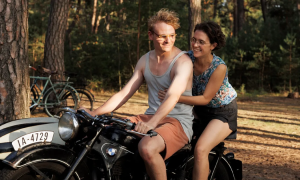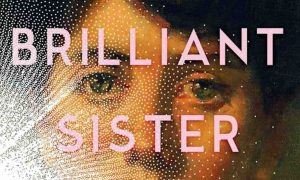 Presented by ActNow Theatre for Social Change and Sean Riley
Presented by ActNow Theatre for Social Change and Sean Riley
Reviewed Wed 11th August 2010
http://www. actnowtheatre.org.au
Venue: Ayers House Museum, 288 North Terrace, Adelaide
Season: August 12, 13, 15, 17 to 21 @ 7pm
Duration: 2hrs incl interval
Tickets: adult $22/students, conc, Fringe Benefits $17
Bookings: on line www.actnowtheatre.org.au or phone bookings via Ayers House Museum 8223 1234 Tuesday and Thursday 10am – 4pm
Henrik Ibsen wrote this play (En folkefiendes, 1882) as a protest against the reaction to his play, Ghosts, which challenged the hypocrisy of 19th Century morality. Public opinion deemed it scandalous, particularly for its references to extramarital affairs, syphilis and incest. Doctor Thomas Stockman, the central character who is labelled an enemy of the people for making a moral stand in the face of overwhelming opposition from those who are politically and financially motivated, is the conduit through which Ibsen speaks out against his critics.
The Doctor has discovered that the new public baths, into which considerable private and community funds have been invested and that are now growing as a tourist attraction and source of income for the town, is suffering from contamination from the tannery owned by Morten Kiil, his wife’s adoptive father. He is rightly worried that some of the tourists have become ill and realises that there is a danger of worse to come. He presents his report to his brother Peter, who is the Mayor of the town, and to the local press in the personages of the publisher, Aslaksen, the editor, Hovstad, and the sub-editor, Billing.
The press at first see a big story and are eager to publish his findings but the Mayor intervenes, pointing out that the town faces ruin if the report is made public. The cost of redirecting the water inlet to the baths to a point above the tannery is prohibitive. He wants the story suppressed and the members of the press realise that their own income will be affected if the baths are closed. Suddenly, the Doctor finds that everybody is against him, placing their own interests before those of others. Even his wife turns against him at first, fearing for her family and future.
Director, Edwin Kemp Attrill, refers to the similarities between the themes in this play and everything from small Australian towns relying on one environmentally damaging industry for its entire economy, or even its existence, through to global warming and the lack of action by major Governments and industries whose profitability would suffer if they were to be socially aware and environmentally responsible. This is, indeed, still a relevant play in many ways and on many levels.
There is a trap in performing in a small, non-theatrical venue in that the actors tend to deliver their lines to one another and not to the audience, which happened here. The lack of projection, coupled with poor diction and rushing lines, ignoring all punctuation, made this a difficult performance to follow. This was worsened by it being performed in the round, as it is even harder to hear what an actor is saying when they have their back to you. This is easily remedied and no doubt will have been corrected by the next performance, acting on comments made by audience members.
There was also an incongruity between this very modern language version of the play, by Rebecca Lenkiewicz, and Kate Moore’s, more or less, period costuming, even conflicting within the costuming with Catherine Story, as the Doctor’s daughter, Petra, wearing her corset on top of her clothes, like a modern Goth.
Guy O’Grady makes a fine Doctor, looking every bit the respected pillar of the community, and Kurt Murray gives a good account of himself as the politically and economically driven Mayor. They get some powerful tension going between them in their conflict scenes. Nicholas Cutts, as Hovstad, also puts in some strong work, with good support generally from the others in the cast: Sarah Dunn, Catherine Story, Felix Kneebone, Loki Ree Macnicol, Ailsa Dunlop and Alexander Ramsay.
This work is not performed very often and this production is worth a visit, but be quick, as it is a small venue with limited seating.
Reviewed by Barry Lenny, Arts Editor Glam Adelaide.




















